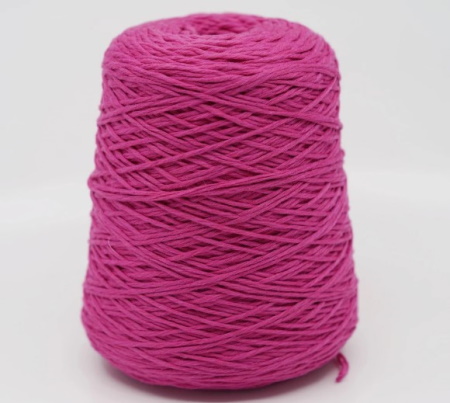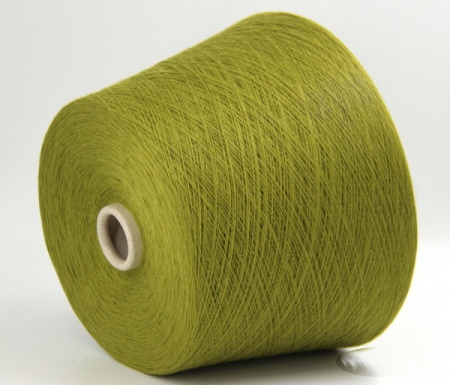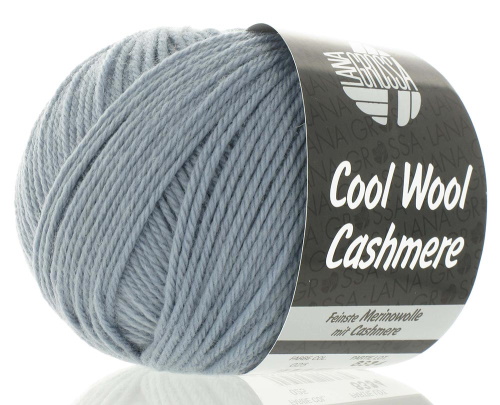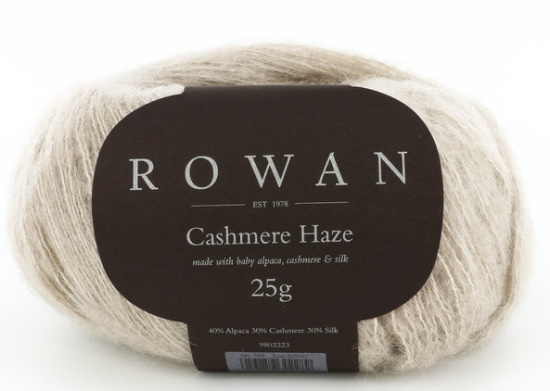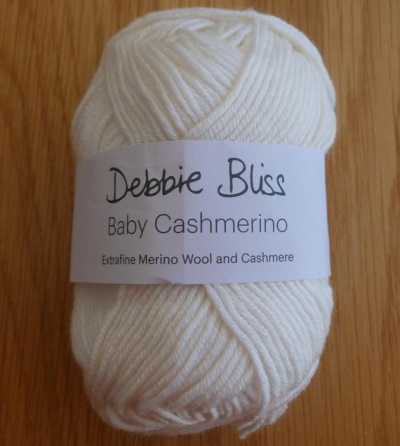Cashmere yarn for hand knitting is equally popular among both amateurs and professionals. It is made from natural raw materials and therefore is soft and retains body heat well. To knit a beautiful and useful product, you should buy high-quality material, correctly calculate the number of threads and know the nuances of caring for things.
What is cashmere yarn, its features
Cashmere yarn for hand knitting, which can be purchased in specialized stores, is made from the down of the markhor goat, which lives in the Himalayas.
The material is collected in the spring, when its properties are most effective., - in sub-zero temperatures the animal grows undercoat, which prevents it from freezing.
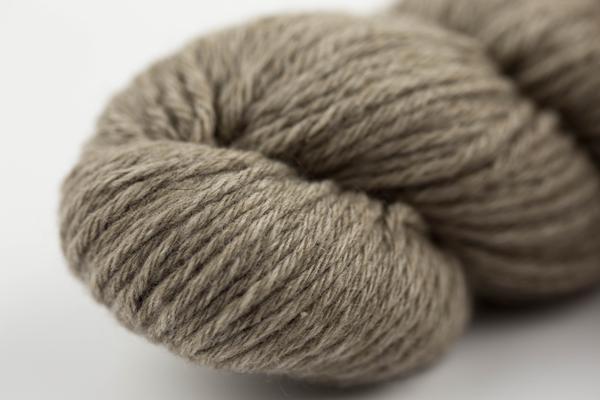
To collect wool, manual labor and a special combing tool are used. Despite the long work, approximately 200 g of wool can be collected from 1 animal.
The natural color of goats varies from snow-white to almost black, and there are also six brown shades. The material is difficult to dye, with the exception of pure white fur.
Today the word "cashmere" is used to describe a fabric that is soft and delicate to the touch, but this is not a property of the material, but one of the highest quality and most expensive threads for knitting.
The main suppliers of cashmere yarn are China and Mongolia. You can also find threads from India, Iran and Afghanistan on sale. Chinese and Mongolian goods are of higher quality, and yarn from other manufacturers has thicker and coarser threads - this affects the cost of the material and reduces the price of the finished product.
Types of cashmere yarn
Not all mountain animal down is equally valuable. The properties and cost of the raw material depend on where the fur is collected.
The following types of cashmere yarn can be found on sale:
- worsted yarn - the highest quality threads, which are obtained by carefully combing the fur with a comb, which allows you to remove all the unruly hairs. Then the fluff is spun into threads and dyed by hand;
- pashmina - these are threads that are made from fur collected from the neck or belly of an animal - here it is shorter, softer and thinner, so it fits into the thread more tightly. This ensures wear resistance and prevents rapid deformation of the finished product. This grade is considered elite;
- half pashmina – a type of thread that is made from fur collected from other parts of the animal’s body, except for the neck and stomach. This fluff has pile of different lengths, so the finished product quickly loses its attractive appearance – it stretches and becomes covered in pellets;
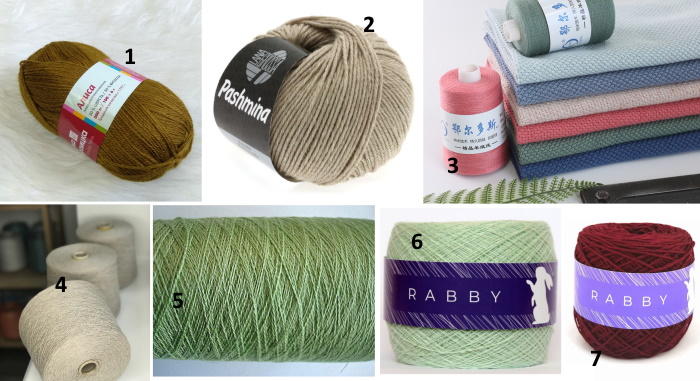
- carded cashmere – yarn, the fur of which is combed using automatic equipment. Wool processed in this way is coarser and has a dense structure;
- modal – a type of artificial cashmere that is made from cellulose. Such products are soft and pleasant to the touch, have bright colors, but they are less warm and can become electrified;
- cashmere blend – a material whose fibers consist not only of natural raw materials. Natural wool can be added to the threads – this provides additional strength and elasticity to the finished item;
- Australian Cashmere - a natural material collected from a goat farm in Australia.
In recent years, another type has appeared - a completely artificial material, eco-cashmere, which contains polyester with the addition of acrylic, viscose or polyamide additives.
Advantages
Cashmere yarn for hand knitting, which is not cheap to buy in its pure form, is expensive, since its production requires manual processing and a large herd of goats. Before using cashmere yarn for knitting, you should study its positive and negative sides.
Among the advantages of using cashmere threads, it is worth highlighting the following:
- Down retains heat better than many types of wool, while the products do not lose their breathability, which allows the skin to breathe;
- cashmere items can be worn both in summer and winter;
- attractive appearance of products;
- softness of clothing. Since fur hairs are thinner than human hair, weaving them into yarn makes the material soft and pleasant to the body;
- Cashmere clothing can be worn on the naked body - it does not itch and is hypoallergenic;
- Dust mites do not breed in yarn;
- down items are lightweight, even those knitted in several layers;
- if you follow the recommendations for caring for your clothes, they will not lose their attractive appearance and will not become deformed during wear;
- items made from high-quality yarn can be worn for more than 1 year, while remaining beautiful;
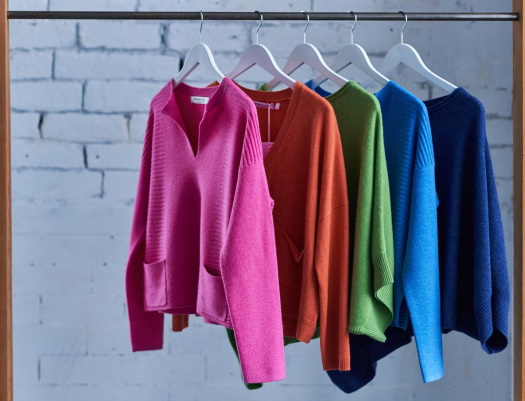
- Cashmere holds its shape well.
Weaknesses
Among the negative factors of using cashmere yarn, the following should be highlighted:
- high cost. Not everyone can afford quality yarn;
- A special cashmere comb is required to care for the item, since pellets form in places of friction on the product and they need to be cleaned off. It is worth considering that the better the quality of the material, the less often you will have to carry out this procedure;
- Proper care of cashmere requires knowledge and time from the owner. It will be difficult for inexperienced people to maintain the attractive appearance of things for a long time.
Composition of cashmere yarn
Cashmere yarn for hand knitting can be not only completely natural, but also contain admixtures of other fibers. Before purchasing a material, you should decide on the purpose of its use.
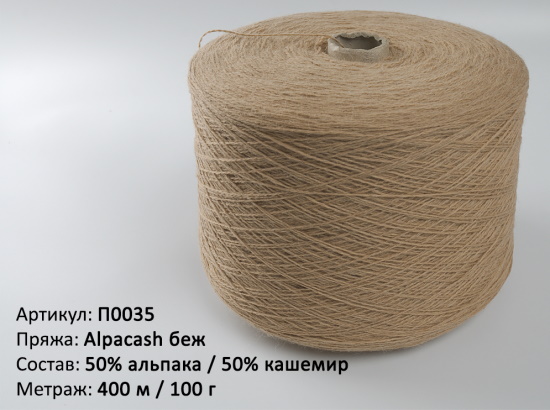
For example, artificial cashmere allows you to create beautiful clothes, but in winter you shouldn’t expect it to keep you warm, and in summer it can be hot due to poor breathability.
100 percent cashmere
100% cashmere is the most expensive yarn option. It is suitable for making any items, but the cost of threads per 1 kg starts from $100. You can buy guaranteed quality goods from such well-known manufacturers as Lana Grossa (Italy), Rowan (England) and Debbie Bliss (England).
Blended yarns
Fibers from other fabrics can be added to cashmere thread to give the fabric new properties, such as strength or shine.
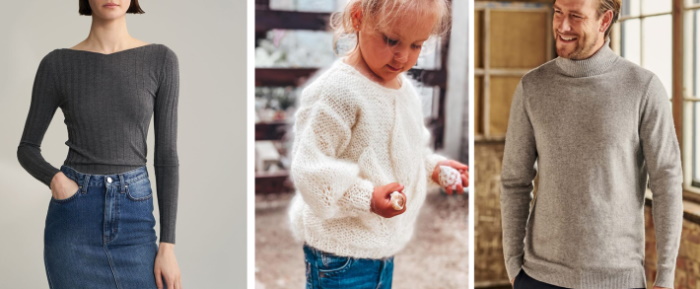
The following types of mixed material can be found on sale:
- cashmere and silk blend suitable for making blouses, shawls or scarves. Thanks to the silk thread, the clothes will have a slight shine. The disadvantages include the fact that the fabric is unstable to friction and quickly wrinkles, which is why it loses its attractive appearance. The yarn is not suitable for creating skirts, cardigans or dresses;
- cashmere and angora blend allows you to create a very soft but thin sweater or jumper. This composition is also suitable for knitting children's clothing, if the child is not allergic to wool. The material is not suitable for creating a men's sweater, since the clothing requires careful wearing and careful care;
- a blend of cashmere and merino, alpaca or camel wool Suitable for knitting men's clothing. Such threads are wear-resistant and feel harder to the touch than 100% cashmere material;
- a mixture of cashmere and synthetic fibers (acrylic, nylon, microfiber) is suitable for knitting everyday items. The material is wear-resistant and has a variety of colors. Such items are easy to care for, do not form pellets, and do not lose their shape;
- cashmere and cotton blend allows you to get a soft and light material that feels more like cotton. Such products are not very warm and will not last for several years with daily wear.

When choosing yarn, you should pay attention to the percentage of cashmere and other fibers included in its composition. The manufacturer is obliged to indicate this information on the product packaging.
Accordingly, the higher the percentage of cashmere, the warmer, softer and more breathable the knitted garment will be. You should not buy yarn with a cashmere content in the blend of less than 50%.
Selection criteria for purchasing yarn
Cashmere yarn for hand knitting (you can buy it at different prices depending on the composition) also differs in the quality of the produced threads.
To choose quality yarn, you should pay attention to the following features:
- the thread should be elastic and dense. If you stretch it, it will quickly return to its original shape;
- The label should indicate the number of threads the yarn is made of. The minimum quantity is 2 pcs. The more threads, the warmer the product will be. A warm sweater can be knitted from 4-6 thread yarn;
- high cost. High-quality cashmere is an expensive yarn, the cost of which cannot be less than $100 per 1000 g.
Distinctions of low-quality cashmere:
- the thread is too soft to the touch - this is a sign of short wool. Since short hairs are woven into the thread, their ends begin to stick out, which creates softness. Clothes made of real cashmere, the threads of which are made of long fluff, become very soft after 3-4 washes;
- low elasticity. Cashmere thread should return to its original shape. If it slowly returns to its original shape when stretched, this is a sign of poor quality;
- High-quality threads are available in white, beige, gray or black, because cashmere does not dye well.
If the material has a bright color and an acceptable price, it is probably not made of natural cashmere or includes other fibers. A dusty color indicates that the product is poorly dyed and the color will wash out after several washes.
Types of cashmere yarn and calculation for hand knitting
There are 3 types of cashmere yarn – natural, mixed and artificial. Calculating the required amount of yarn to create any item does not differ from the type of material.
There are 2 ways to determine the amount of yarn needed for knitting: using a pattern that indicates the exact number, or by making a test sample.
When knitting or crocheting, you should buy yarn in small skeins - 50 g or 100 g. Since the material is light, 1 such skein can hold 500-700 m of thread. But because of its lightness, the thread must be folded in several layers - from 3 to 6.
The following diagram will help you calculate the required amount of yarn:
- First, you need to buy a skein of the selected yarn and knit a test sample of 10 x 10 cm. The knitting should be finished by cutting the thread.
- Next, you need to count the number of rows and loops in each of them. It is better to write down the information on a piece of paper so as not to forget.
- Then you need to unravel the sample and measure the length of the thread used. It is also important to write down the result.
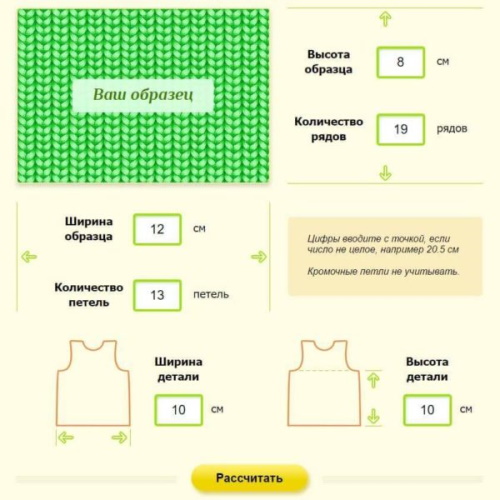
- Then you should calculate the area of the future product. To do this, you need to multiply the length by the width. If the product is knitted from several parts, you need to calculate the area of each of them and add the values.
- Then you need to multiply the area of the product by the length of the thread from the sample - this will allow you to calculate the total length of the thread needed for knitting.
- To calculate the amount of yarn (skeins), you need to divide the total length of the thread by the length of the thread in 1 skein.
If the calculations result in a non-whole number, it should be rounded up. Yarn should be purchased with a reserve, so that it is definitely enough to make the intended item.
Manufacturers and prices, comparison of yarn
When buying cashmere yarn, you need to pay attention to the brand. It is worth choosing a well-known brand, so there will be less risk of buying a fake.
The table shows well-known manufacturers of cashmere yarn:
| Manufacturer name | Description | Yarn characteristics | Price |
| Cariaggi (Italy)
| The yarn complies with Oeko-Tex Standard 100 and is ISO 14001 certified. It is suitable for machine and hand knitting. | Cashmere from adult goats or kids, as well as mixed options with silk, merino wool, cotton. Weaving in 2 threads.
The yarn is available in the following colors:
| 100% cashmere – from RUB 1,000. for 100 g. Blended yarn – from 530 rubles per 100 g |
| Colombo (Italy)
| There is an Oeko-Tex Standard 100 certificate. Down from Mongolia and Central Asia is used for production. | Blended threads containing cashmere (10%), cotton, merino wool, viscose and acrylic.
Available color options:
| 300 rubles for 100 g |
| Lana Grossa (Italy)
| Premium yarn suitable for knitting any type of clothing. The material has GOTS and ICEA certificates, confirming the eco-friendliness of the products. | Mixed material – PURO line, which includes cashmere – 39%, merino wool and polyester. 100% cashmere – MODA line.
The range includes the following colours:
| 100% cashmere – from RUB 1,300 for 25 g. Blended cashmere - from 800 rubles for 25 g |
| Rowan (England)
| Premium class yarn, the exclusive distributor of which in Russia is Family Hobby. | A blended yarn that contains 80% merino wool and 20% cashmere or 85% cotton and 15% cashmere. In 2019, a new line was introduced with a cashmere content of 30%.
The following colors are available for sale:
| From 500 rubles for 25 g |
| Debbie Bliss (England)
| The brand was named after its founding designer, Debbie Bliss. Her main goal is to create high-quality materials and clothing for children and adults. The manufacturer tries to produce the widest possible range of yarn shades. | Blended yarn, presented in the following lines:
Available shades:
| The price varies depending on the product line:
|
Caring for cashmere products
Cashmere items require careful care - this will help them maintain their attractive appearance for a long time.
Rules for caring for knitted items:
- washing is a test for a knitted item, so it is better to do the procedure by hand. After manipulation, the cashmere fibers become softer and the loops become denser - this makes the material fluffier and warmer. The item should be washed after 3-4 wears;
- Cashmere should be cleaned in cool water, using only liquid detergents for delicate fabrics. Do not rub the fabric in your hands, it is better to let the item soak and gently knead it in water, then rinse well;
- Cashmere should be dried on a flat surface, without allowing any part of the item to hang down. The material can be dried by placing it on a towel. When it has absorbed most of the moisture, it should be replaced with a dry one, and the items should be turned over;
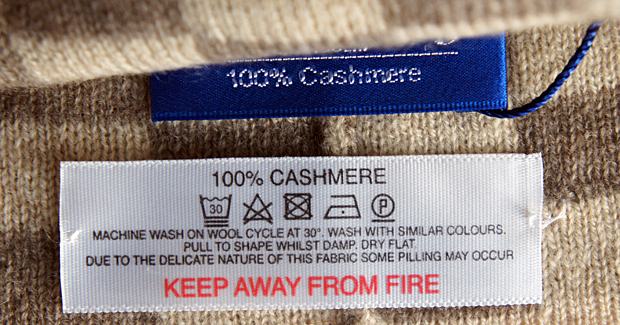

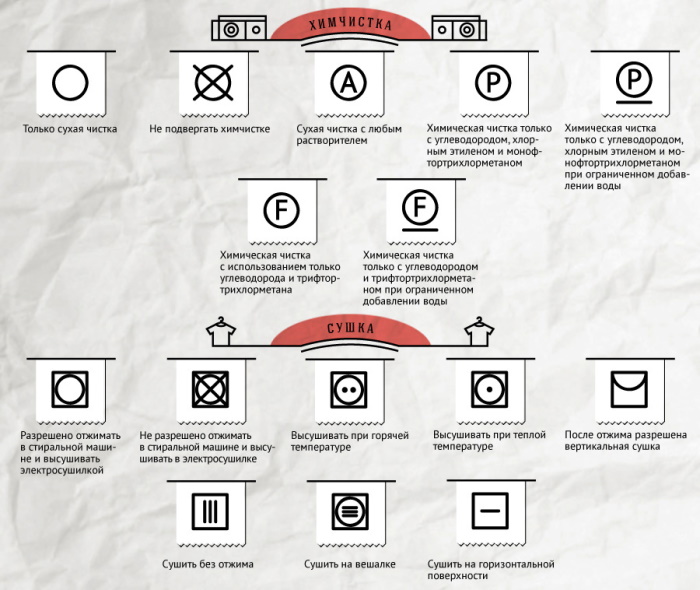
- It is not allowed to use a hot iron to iron cashmere items. It is better to use a steamer, which will gently smooth out the item;
- If pellets appear, they should be removed with a special device - a cashmere comb. The procedure should be carried out as needed - after washing and before storage;
- To store a cashmere item, fold it and place it in a cotton cover so that the fabric can "breathe". To prevent insects from getting into the material, you can put lavender bags inside.
Cashmere yarn for hand knitting is a natural and warm material that helps to create a unique, soft and pleasant thing for the body. To prevent the product from deteriorating after washing, you should buy high-quality threads and study the rules for caring for cashmere clothing.
Video about yarn
Cashmere yarn for hand knitting:

